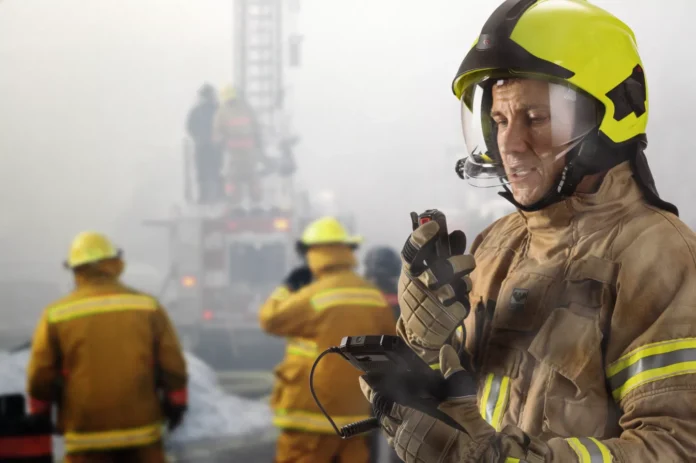Nokia has launched a number of industrial 4G/5G devices for hazardous environments in ports, mines, chemical plants, and oil platforms. They are targeted at companies buying its private 4G/5G networks. The Finnish firm has also updated its own team comms application to align with latest 3GPP specifications for mission critical services, and released an Android version of its digital twin tool for industrial networks. It is offering industrial devices on a managed subscription (“as-a-service”) for the first time with its Mission Critical Industrial Edge (MXIE) platform.
It appears the firm is releasing devices in two categories, including a US-made IP 68-rated handheld under its own brand, with dual-SIM operation and a long battery life, and two ‘explosion-proof’ (EX) rated phones from Germany-based industrial handset specialist i.safe MOBILE. The Nokia unit supports public safety workers using Band 68 at 450 MHz, and features an exchangeable battery to allow shift workers to share devices in the field, and customisable keys to define a dedicated push-to-talk (PTT) button.
It also has “other large buttons and optional accessories”, including remote speaker microphones and earpieces, to support PTT for workers with “safety equipment like helmets and gloves”. The two explosion-proof handsets from i.safe MOBILE are aimed at workers in oil and gas, mining, chemical production, and other hazardous sectors. They can be used in ATEX Zone 1 and Zone 2 environments, where a “flammable atmosphere is not likely but could occur for a short time”. They support “all necessary radio frequency bands” and have “all required certifications” (ATEX in Europe, NEC500 in the US, IECEx globally, UKEX in the UK, JNIOSH in Japan).
The new version of Nokia Team Comms (NTC), which comes with its MXIE platform and allows group video and voice calls, now aligns to the 3GPP-defined MCS (mission critical services) standard. It supports “mission-critical PTT” (MCPTT), said Nokia, providing “capabilities usually only available in more complex and expensive solutions”. The new version allows administrators to configure changes to device fleets via a “newly built web portal” – which works on the site-edge and works with internet connectivity.
The company’s Network Digital Twin (NDT) tool now works with Android devices, allowing coverage and performance data for private cellular, public cellular, and enterprise Wi-Fi networks to be “collected in real time and processed on MXIE”. A statement said: “Enterprises in dynamic environments, such as ports, factories or mines, can see how changes in their operations impact network performance and use this insight to inform future network planning and use case decisions.”
Nokia said it will bundle its industrial 5G devices as-a-service with its Digital Automation Cloud (DAC) private-networks product. Application bundles include device management, team comms, and digital twin tools. It said: “This model allows enterprises to move asset costs from capital to operating expenses and more easily connect workers and manage the fleet of industrial devices in their plants.” Nokia said it will add more devices as it goes – to “strengthen its commitment to help industrial enterprises navigate their digital transformation journeys”.
Martin Haaf, chief executive at i.safe MOBILE, said: “We are pleased to support Nokia with our decades of expertise in explosion-proof mobile devices with our latest 5G developments. The combination of our devices with Nokia’s solutions offers companies a great added value on their digitalization journey.”
Martin Beltrop, head of industrial devices and enterprise edge solutions at Nokia said: “We can serve the growing needs of enterprise workers in industrial and hazardous environments as well as public safety teams… Teams will have more information than ever before allowing them to make instant informed decisions to maintain efficiency and network reliability in their dynamically changing environments.”

